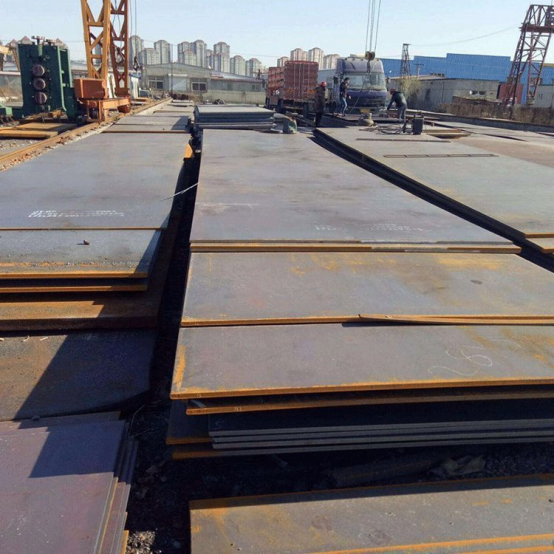The Corrosion Conundrum
Ahoy, mateys! Let’s dive into the salty depths of marine steel plates, specifically the marine black steel plate. In the high-salt and high-humidity environments that ships endure, corrosion is the villain of the story. The main types of corrosion include uniform corrosion, pitting corrosion, and stress corrosion. Uniform corrosion is like that annoying friend who just won’t leave you alone, slowly eating away at your steel plate. Pitting corrosion, on the other hand, is like a surprise party gone wrong—unexpected and localized, leading to holes that can sink your ship faster than you can say “man overboard!” Stress corrosion is the sneaky saboteur, creeping in when you least expect it. So, when you’re out there on the high seas, make sure your marine structural steel is up to the task!
High-Strength Steel: The New Wave
Now, let’s talk about why modern ships, especially those colossal container ships and LNG carriers, are increasingly opting for high-strength steel like EH36, EH40, and EH47. It’s simple: these ships are getting bigger, and they need materials that can keep up with their ambitious plans. High-strength steel is like the gym rat of the steel world—strong, durable, and ready to lift heavy loads without breaking a sweat. With the added strength, these ships can carry more cargo, withstand harsher conditions, and ultimately, sail smoother. So, if you’re in the shipbuilding business, you better be on board with high-strength steel!
TMCP: The Secret Sauce
Enter TMCP (Thermomechanical Control Process), the core technology that’s revolutionizing high-performance ship plate production. Think of TMCP as the secret sauce that makes your burger taste ten times better. It simultaneously improves the strength, toughness, and weldability of steel plates, making them the triple threat of the marine world. By controlling the temperature and deformation during production, TMCP ensures that the steel plates are not only tough enough to handle the ocean’s wrath but also easy to weld together. So, if you want your ship to be the Beyoncé of the seas, TMCP is the way to go!
Tackling Thick Steel Plate Challenges
Now, let’s get into the nitty-gritty of producing extra-thick steel plates over 80mm. One of the biggest challenges is the uneven core structure and performance degradation caused by insufficient compression ratio. It’s like trying to bake a cake without enough flour—things just don’t rise to the occasion! To tackle this, manufacturers need to ensure proper compression ratios during production. This means using advanced techniques and equipment to achieve a uniform structure throughout the plate. After all, nobody wants a lopsided cake—or a lopsided ship!
Steel Prices and Shipyard Profitability
Finally, let’s chat about the elephant in the room: fluctuations in steel prices and how they affect shipyard profitability. When steel prices soar, shipyards can feel like they’re on a rollercoaster ride—up one minute and down the next. High steel prices can squeeze profit margins, making it tough for shipyards to stay afloat. Conversely, when prices drop, it’s like finding a treasure chest at the bottom of the ocean! Shipyards can capitalize on lower costs, but they must also be cautious of market volatility. So, whether you’re building a luxury yacht or a sturdy cargo ship, keeping an eye on steel prices is essential for smooth sailing.
In conclusion, marine steel plates, especially marine black steel plates, are the backbone of modern shipbuilding. With the right materials, technologies, and strategies, shipyards can navigate the choppy waters of the industry and come out on top. So, let’s raise a toast to Jindalai Steel Group Co., Ltd. and their commitment to providing high-quality marine structural steel that keeps our ships sailing strong!
Post time: Nov-21-2025









